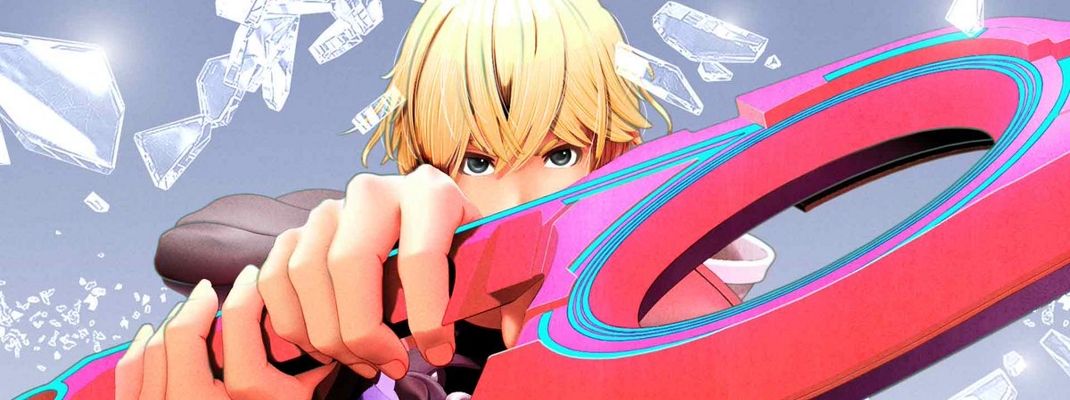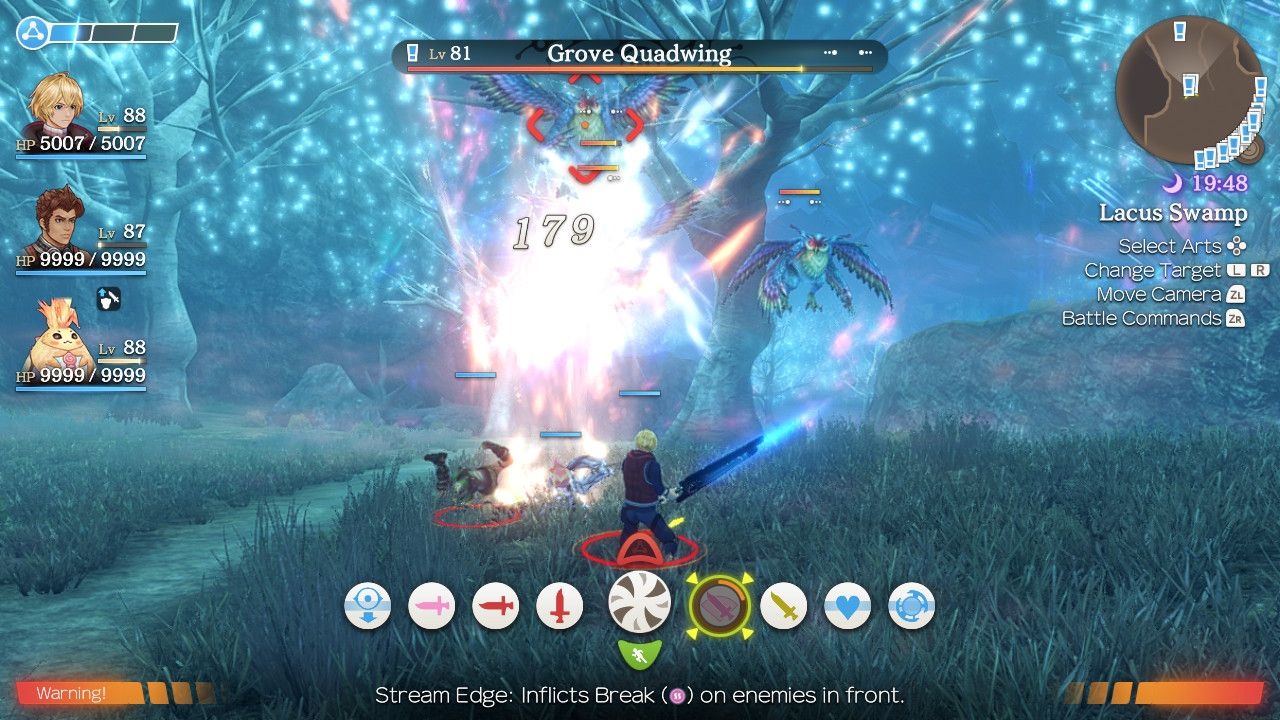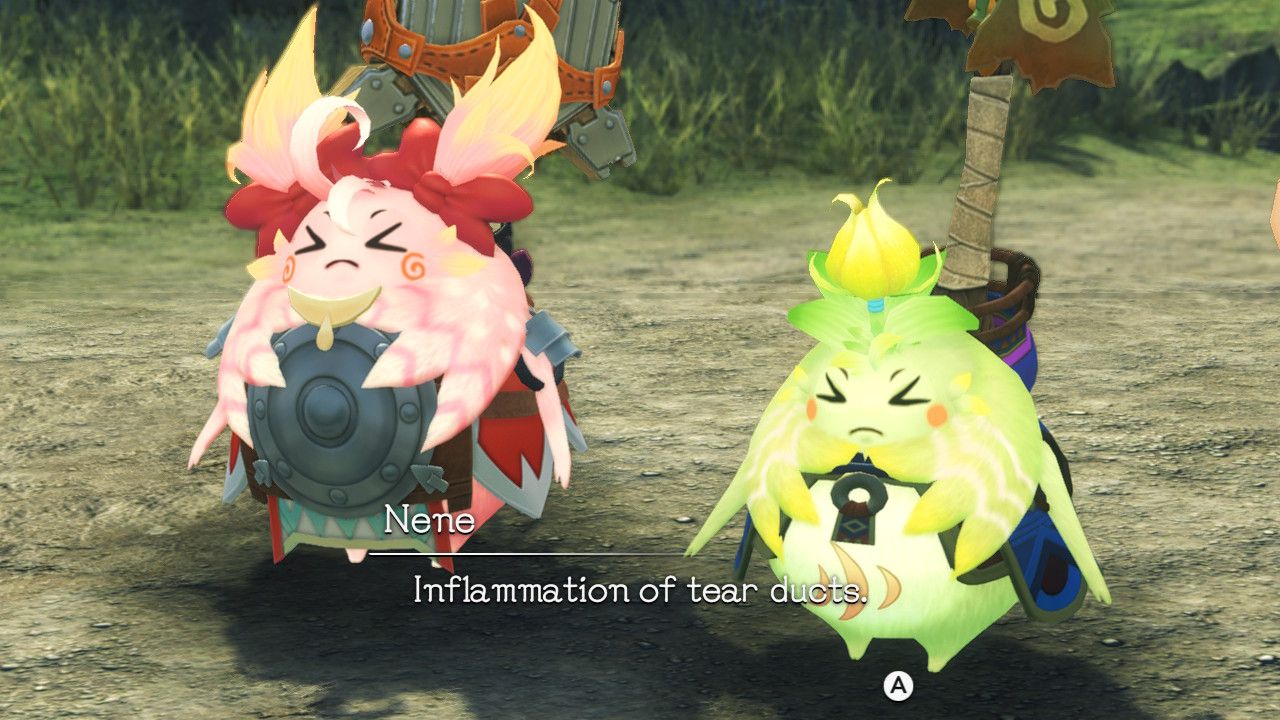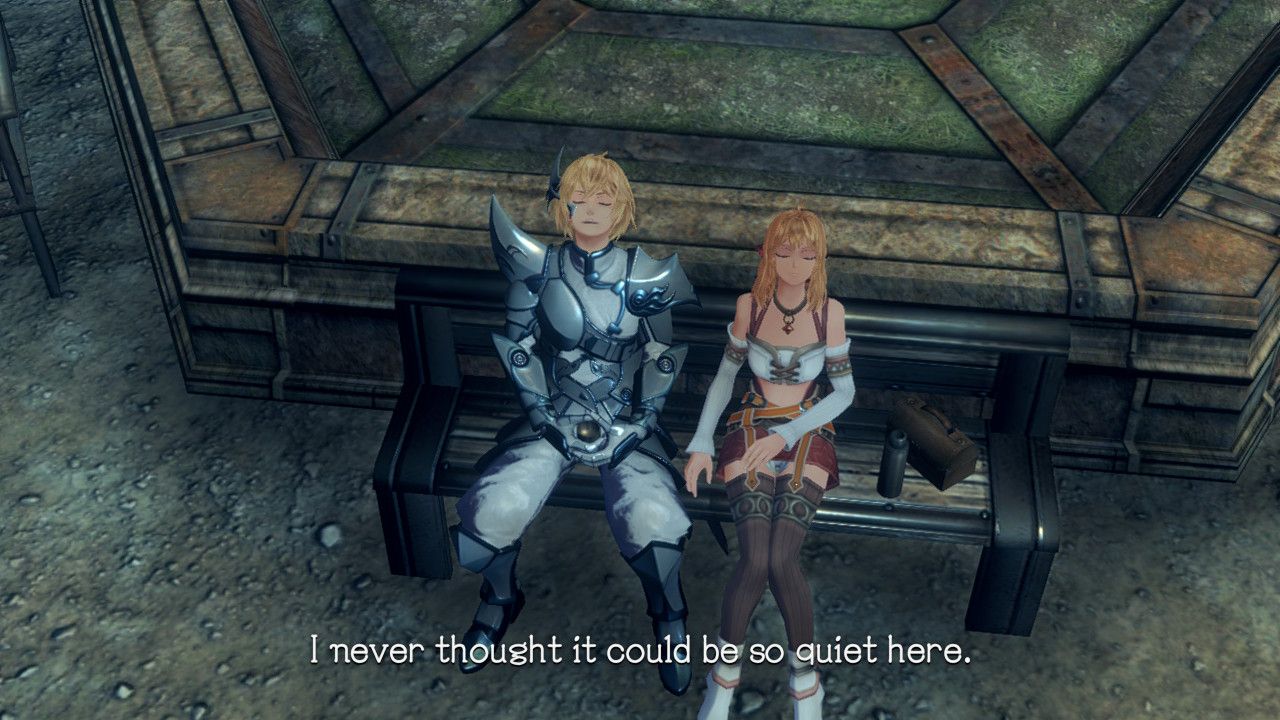Over ten years ago Monolith Soft introduced the first entry into the Xenoblade Chronicles series. This new title acted as a spiritual successor to both Xenogears and Xenosaga seen on PlayStation systems but embraced an entirely new style of play. It wouldn't release in the west for another couple of years where it saw decent sales for a new IP but was hindered by retail decisions. A few years later it would see a New 3DS port in addition to two more entries with the third title finally seeing a good deal of success when it launched on Switch in 2017. Now the original title is back as Xenoblade Chronicles: Definitive Edition which brings a brand new coat of paint, new story and additional mechanics. It's all these combined that make it stand out even more as one of the most iconic RPGs ever made.
This story of Xenoblade takes place atop two great titans known as the Mechonis and Bionis. Long before anyone remembers, the two were at war and fought until finally they perished, with their lifeless bodies becoming the new world that the creatures live on. The story follows Shulk and his friends living their mostly peaceful life when their home town is attacked by dangerous creatures known as the mechon. During this attack Shulk takes up the mysterious blade known as the Monado and is able to see glimpses of the future that help him fight them back. They manage to get the mechon to retreat, but not before a huge toll as been taken and his town gravely damaged. Realizing the Monado is the only thing that can stop them, Shulk sets out for revenge to find the faced mechon who attacked his town and put an end to every last one of them.
Combat in Xenoblade is most commonly compared to an MMO, wherein the most basics are standing while the character automatically attacks and having special moves known as arts that charge up over time. There's more depth added to this with positioning playing a role in character attacks. Shulk's iconic back slash, for example, does significantly more damage when attacking the enemy from behind. Some attacks also work best from the side, meaning moving to find the right place to attack can be important to help in battle. Exclusive to Shulk is also Monado arts which can be used when his talent gauge is filled up. For every other character the talent gauge is typically a powerful attack or special that aids their arts, but for Shulk it unlocks a secondary set of arts that can help his ability to see the future with powerful attacks or defensive moves. When Shulk has a vision of the future in battle it's almost always an attack that will do massive damage to the team, so he or his allies can help save each other using Monado arts of warning one another to take defensive or healing measures.
If a party faints, they can either revive one another if the party gauge has one of its three slots filled. Should the party fall in battle they simply respawn at the last landmark they visited. Every character has armor and weapons they can find throughout the journey, aside from Shulk who exclusively uses the Monado as his weapon, and gear is of course important to increase defense and attack power. Armor and weapons can be enhanced with gems, which grant skills to characters such as extra attack or defense. These can also be crafted from crystals found from monsters or mining in order to make even more powerful versions of them. Each character has a completely unique move set and they're all fun to play, so switching between them to find the perfect team can be a fun way to experiment as the party grows.
Exploring the world is a big part of Xenoblade Chronicles. Outdoor areas the characters visit are simply massive, with secrets hidden in almost every corner imaginable. Enemies are spread across the land, some at levels that can be taken down while others might be threateningly high to lower leveled adventurers. While it's easy to simply follow along the story route from point to point, Xenoblade encourages exploration by rewarding exp when new areas are discovered and plenty of secrets to be found. Along the way, blue orbs on the ground act as item collectibles that are often required for quests or can be added to the growing collectopaedia that every area has. Filling the collectopaedia will reward helpful items, making it a great way to get some useful gear. Enemy levels can also help players figure out where's best to go exploring first, but careful adventurers might be able to sneak past some of these dangerous monsters in order to reach places earlier for some bonus exploration.
Quests play a huge, albeit optional, role by tying in to some of the larger side mechanics. There are five major zones on the Bionis that each have their own affinity level. In order to increase this, players can complete quests for villagers in order to earn more exp or items. Affinity boosts Shulk's standing with each area and characters, allowing him to trade with them for items and unlock more quests that can reward helpful skills for characters in the party. Many quests are also automatically completed the moment the task has been done, meaning Shulk is rewarded immediately instead of having to return to the NPC that gave it helping save time. Most of the named NPCs that offer quests will give a little more insight into how they live and their relationships with one another, which helps build the affinity chart.
Each character in the party also has their own affinity with one another which can be increased by fighting together, giving items to one another or simply talking to quest NPCs when in the same group. Boosted affinity between characters helps in battle and will also allow characters to share skills from their respective skill trees in order to create even more powerful parties. Early on in the story players will also come across Colony 6 which is in the process of trying to rebuild it self. Throughout the story they can check on Colony 6 and help collect items to help them get back together and even recruit villagers from other towns to come live there or set up shot. Although optional, working on Colony 6 eventually gives players access to more items that they can't find elsewhere and additional quests along the way.
As it's the Definitive Edition it should come as no surprise that the title has seen some large changes to it compared to the original. The first and biggest quality of life change is how quests function. In both previous versions quests were given and the objectives outlined, but the location was usually vague. Definitive Edition takes direction from Xenoblade Chronicles 2 by steering players to where their quest is, be it the monsters they need to fight, NPC they need to talk to or item they need to find. This is a massive time saving change that makes quests significantly more accessible and actually fun to complete without having to run around for hours or give in and look up where to find certain objectives. Quests can also be individually tracked and even tell the player if they need to change the time in order to find what they're looking for.
Definitive Edition also sees the inclusion of casual and expert modes, with casual mode offering easier fights and expert mode allowing players to level their team down or up based on the exp they have obtained. Both these modes let players choose the kind of journey they like which is never a bad thing to have and both can be easily turned on and off at any time to make for the best experience. On the cosmetic side of things, players now have an appearance option with their armor which allows them to put the visuals of any piece of armor they've obtained throughout their journey even if it's been sold away or discarded. This also carries into new save files so players can start their journey looking as classy as they like based on the armor they've collected.
One entirely new mode for the base story of this version is Time Trials. Similar to challenge mode in Xenoblade Chronicles 2, these trials challenge players to fight against battles with their current or a pre-set team in order to earn rewards. All of the rewards are armor sets, mostly cosmetic, that are earned based on the outcome ranking on the quest. For those who have a hard time beating these challenges, however, every piece of armor can also be bought in a special store using the noponstone currency that is earned from completing these trials. The shop from the nopon sage also lets players purchase other helpful items such as gems, rare collectibles based on their progress in the story. Once the Future Connected epilogue is completed they can even purchase master art books to power up their arts even further than ever before. Time trials push teams to their limit and test the skills of the player by seeing just how efficient their teamwork is against a variety of enemies. These rewarded outfits are mainly for looks instead of practical use in battle but make a great way to show off accomplishments from time trials in style. It's also nice to have access to the more rare collectible items for trading or working on Colony 6.
Future Connected is the brand new epilogue in Definitive Edition that can be played immediately from the home menu if players so desire. It takes the previously excluded Bionis Shoulder area and turns it into a brand new story that takes place at the end of the main series of events. It features Shulk and Melia as they fly to the Bionis Shoulder to help rescue people living there and see what's going on. Along the way they team up with two of their nopon companion Riki's children, Nene and Kino, who had stowed away on their ship. The campaign itself is around ten hours, but offers significant story detail for Melia that follows up on some story ties that weren't fleshed out in the main story itself. The core gameplay is mainly the same, with the main exceptions being Quiet Moments replace the main campaign's heart to hearts and Shulk's visions no longer being used. There's also a brand new enemy type known as fog beasts that act as a powered-up version of their normal monster counterpart. The Bionis Shoulder itself is a surprisingly large area to explore that's the perfect size for the length of the campaign, allowing for tons of exploration and over forty optional side quests to complete along the way. The party gauge also changes and is replaced with the ponspectors, a group of nopon exploring the Bionis who have unfortunately gotten lost along the way. Finding them adds them to the party and allows them to help in combat. If the new ponspector party gauge is filled, the team can dish out a heavy damaging or healing attack that can help in the heat of a difficult fight. While this epilogue alone might not be worth picking up Definitive Edition for, it's a enjoyable bite-size treat after the lengthy main campaign.
Even on the Wii, Xenoblade Chronicles had quite possibly the most impressive visuals the console had to offer. The huge, fantastical landscapes were drenched with colorful detail that made every single one a treat to discover. Definitive Edition amps it up with improved HD textures and improved lighting across the board in a newer engine. The biggest change, of course, is that of the character faces. It's not a stretch to say that the Wii models left a lot to be desired with their flat, bland faces that didn't manage to show much emotion. The new character models are gorgeous and show the detail of every moment that felt like it was never truly captured before, making it easier to feel compassionate for all of them. The soundtrack also received a remastering of nearly every song, with each one being an impressive highlight of what the originals made with improvements all around. Those who prefer the original of course still have the option of freely switching between them.
The framerate is consistent while playing in either docked or handheld and while handheld visuals do take a dip, it's still a lovely sight to behold and a surprisingly large improvement from Xenoblade Chronicles 2 which had overly sharp visuals in handheld. Definitive Edition also lets players actually use the video function, which Xenoblade Chronicles 2 was sadly lacking. The menu has also been completely revamped and is not only much faster to navigate, but easily the best menu the Xenoblade series has put together. It's simple without being confusing and entirely straight forward. Load times when going between areas have also seen a noticeable decrease in time, making frequent fast traveling no longer feel like a wait between areas.
Closing Comments:
Xenoblade Chronicles on the Wii was already a masterpiece of the time. Although it had glaring flaws upon its original release, its amazing journey made it worth getting through. Now Definitive Edition brings it back with fixes abound that help tie everything together in a coherent fashion while keeping what was most beloved cleanly intact. The story is full of so much heart and wonder with every character becoming more charming than the last. The world is a blast to explore and more enjoyable than ever with upgraded visuals that make every inch sparkle and draw curiosity around each corner. The combat, while simple at first, has a great depth that makes experimenting and trying new team setups extremely fun in order to find wild, crazy or just balanced setups that are great to use for challenging enemies. It's easy to say that Xenoblade Chronicles is one of the absolute best RPGs ever made and Definitive Edition proves it further by adding the polish it has so desperately deserved all this time. Ten years after its initial release in Japan, Xenoblade Chronicles: Definitive Edition has proven that sometimes classics can still get better with a little extra love and care to make them shine brighter than ever before as a true masterpiece.





